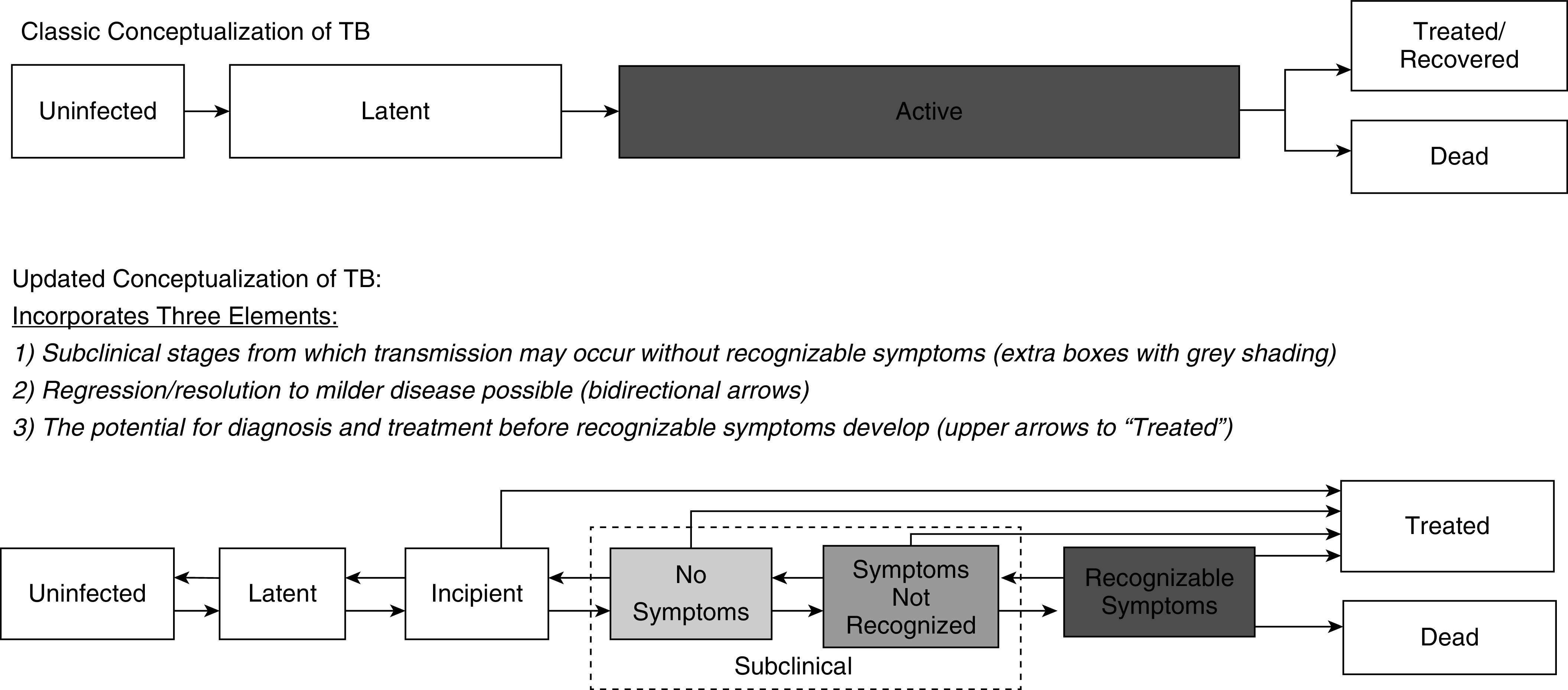Figure 1.

The spectrum of tuberculosis (TB) disease. The top panel shows a “classic” conceptualization of TB as a two-stage entity with inevitable forward progression, transmission (denoted by gray shading) occurring only from those with active TB, and diagnosis and treatment implicitly focused on people with symptomatic (“active”) TB. Others have demonstrated that this conceptualization is an oversimplification, namely, that the development of active TB represents distinct incipient and subclinical stages (5, 6). In the bottom panel, we further expand on this understanding, presenting an updated conceptualization of the spectrum of TB disease, illustrating that individuals with subclinical TB may be truly asymptomatic or have symptoms that are not recognized, both progression and regression across stages occur without inevitable development of recognizable symptoms, and individuals with milder forms of TB disease can be effectively diagnosed and treated. Shading intensity indicates that both subclinical and active TB states may be infectious and that infectiousness is likely to increase with more advanced disease, although the degree of correlation is uncertain.
